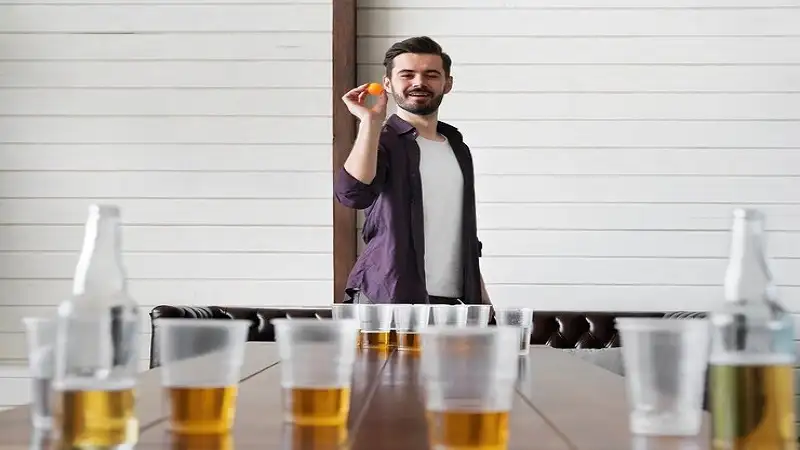Understanding alcohol consumption and the concept of a standard drink is vital for responsible drinking and health awareness. This article explores the question: “Why are a 12 ounce hard seltzer and 1.5 ounces of liquor both standard drinks?” By breaking down the science of ethanol content, alcohol by volume (ABV), and the implications of these standards, we aim to provide a clear answer to this intriguing question.
What Defines a Standard Drink?
Before diving into specifics, let us answer the central question: “Why are a 12 ounce hard seltzer and 1.5 ounces of liquor both standard drinks?” A standard drink is defined by the amount of pure alcohol it contains, not the volume of the liquid. In the United States, a standard drink equates to approximately 14 grams (0.6 ounces) of pure alcohol.
Key Elements of a Standard Drink
- Ethanol Content: The amount of pure alcohol present in the beverage.
- Alcohol by Volume (ABV): The percentage of ethanol in the drink.
- Serving Size: The quantity required to equal 14 grams of pure alcohol.
These factors explain why vastly different beverages, such as a 12-ounce hard seltzer and 1.5 ounces of liquor, can both be categorized as standard drinks.
Alcohol Content in Hard Seltzer
Hard seltzers are carbonated alcoholic beverages with a relatively low ABV, typically around 5%. These drinks have gained popularity for their light and refreshing characteristics. Despite their larger serving size, their low ABV ensures that a single 12-ounce serving contains approximately 14 grams of pure alcohol.
Breaking It Down
To answer “Why are a 12 ounce hard seltzer and 1.5 ounces of liquor both standard drinks?”, let’s calculate the alcohol content:
- Volume: 12 ounces (355 ml)
- ABV: 5%
Using the formula:
355 × 0.05 × 0.789 ≈ 14 grams of pure alcohol.
This calculation confirms that a 12-ounce hard seltzer qualifies as a standard drink due to its ethanol content, not its physical volume.
Alcohol Content in Liquor
Liquor, or distilled spirits, such as whiskey, vodka, and rum, typically have an ABV of around 40%. Despite the smaller serving size of 1.5 ounces, the higher concentration of ethanol ensures it delivers the same 14 grams of pure alcohol as other standard drinks.
Breaking It Down
Here’s how liquor fits the standard drink framework:
- Volume: 1.5 ounces (44 ml)
- ABV: 40%
Using the formula:
44 × 0.40 × 0.789 ≈ 14 grams of pure alcohol.
This equivalence explains why a 12 ounce hard seltzer and 1.5 ounces of liquor both standard drinks.
Comparing Standard Drinks Across Beverages
To further clarify, here’s how various beverages compare in terms of pure alcohol content:
| Beverage | Volume | ABV (%) | Ethanol Content (g) |
|---|---|---|---|
| Hard Seltzer | 12 oz | 5% | 14 g |
| Liquor (Spirits) | 1.5 oz | 40% | 14 g |
| Beer | 12 oz | 5% | 14 g |
| Wine | 5 oz | 12% | 14 g |
This table demonstrates the equivalence of alcohol intake across different beverage types, addressing why a 12 ounce hard seltzer and 1.5 ounces of liquor both standard drinks.
Why Knowing Standard Drinks is Important
1. Promotes Responsible Drinking
Awareness of standard drinks enables individuals to monitor their alcohol consumption effectively. Understanding ensures that drinkers don’t underestimate their alcohol intake.
2. Supports Health Guidelines
Health authorities recommend moderate drinking limits based on standard drink definitions. For example:
- Women: Up to 1 standard drink per day.
- Men: Up to 2 standard drinks per day.
Exceeding these limits increases the risk of health complications like liver disease, heart issues, and addiction.
Global Differences in Standard Drink Definitions
Although this article focuses on U.S. guidelines, it’s essential to note that the definition of a standard drink varies worldwide. For instance:
- Australia: 10 grams of pure alcohol.
- United Kingdom: 8 grams of pure alcohol.
- United States: 14 grams of pure alcohol.
Despite these differences, the core principle remains consistent: equivalent ethanol content defines a standard drink.
Conclusion
The equivalence between a 12-ounce hard seltzer and 1.5 ounces of liquor lies in their identical ethanol content of approximately 14 grams of pure alcohol. Understanding is crucial for responsible consumption, adherence to health guidelines, and informed decision-making. By focusing on ethanol content rather than beverage volume, we can better navigate the diverse landscape of alcoholic beverages. Read More. Famecozy.
